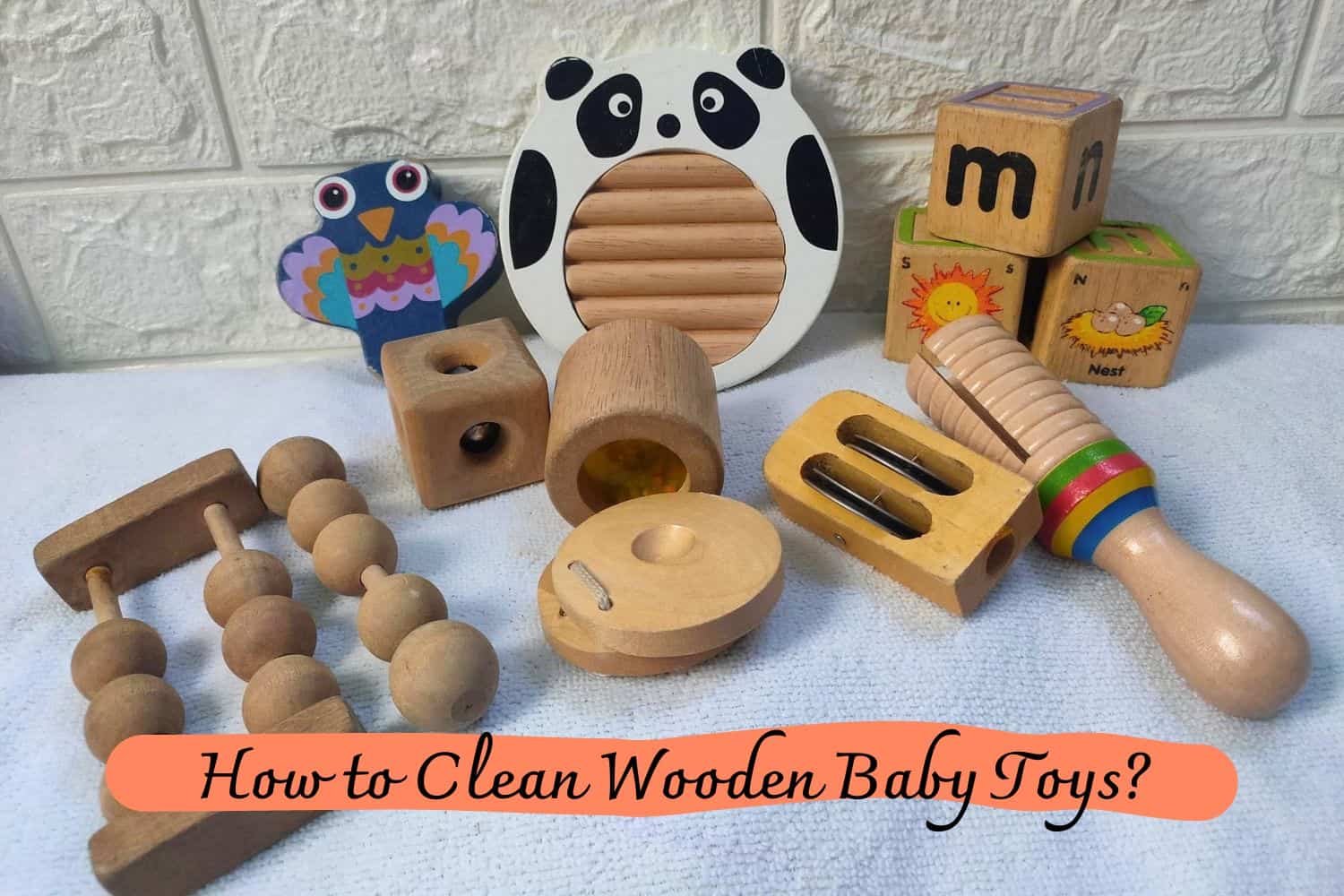Are you struggling with how to clean wooden baby toys without damaging them? Here are our expert tips and guides on the best ways to keep these beloved playthings safe and clean.
How to Clean Wooden Baby Toys?
As a new parent, balancing life and caring for your growing family can be overwhelming. Keeping the house clean – and a sanitary environment for your little ones to explore – is an important job.
When it comes to cleaning wooden baby toys, parents may not know where to start, especially if they’re unfamiliar with essential childcare products or safety standards.
Learning how to clean wooden baby toys isn’t difficult though; this blog post will take you step-by-step through the best practices of getting all of those wooden teethers, blocks, puzzles, and more back into pristine form so you can provide clean play spaces your children will love without any worries about their health!
What Can You Use to Clean Wooden Toys?
Discover the perfect solution for cleaning your beloved wooden toys with ease. Embrace the power of simple, all-natural cleaning products that guarantee stunning results. Opt for gentle soaps, such as castile soap, or vinegar to effortlessly restore your toys’ gleaming splendor.
Dilute these products with water, maintaining a harmonious 1:4 ratio for optimum effectiveness. Encounter stubborn residue? Fear not, as a remarkable paste of baking soda and water will come to the rescue.
Simply apply it to the affected areas and vigorously scrub with a damp cloth to witness a remarkable transformation.
How to Clean Wooden Baby Toys?
1. Preserve the Shape and Color: Avoid Water Soaking
To keep your wooden toys in optimal condition, it’s important not to soak or immerse them in water. Prolonged exposure to water can damage the wood, causing it to lose its shape and color.
2. Gentle and Natural Cleaning Methods
Chemicals found in disinfectant sprays, wipes, and wooden furniture cleaners can leave harmful residues. Instead, employ these gentle and natural cleaning techniques:
- Use a mild soap, like castile soap, and rinse well with a sponge or damp cloth.
- Dilute white vinegar or apple cider vinegar with water for a safe and effective cleaning solution.
- Stubborn dirt can be removed with baking soda and water paste and applied with a damp cloth.
Pro Tip: Make the cleaning process faster by using a spray bottle with your preferred cleaning solution.
Note: If your wooden toys are used in nursery, childcare, or educational settings, adhere to your organization’s toy sanitation guidelines. Avoid soaking them in water to prevent damage.
3. Thoroughly Air Dry
After cleaning, allow the toys to air dry. On warm days, you can even place them outside to expedite the drying process.
Pro Tip: Avoid direct sunlight to prevent paint fading.
4. Quick Bulk Cleaning
For busy parents with limited time, cleaning larger wooden toys can be challenging. Here’s a quick method:
- Prepare a sink with a 1:4 solution of soap/vinegar and water.
- Place the toys in the solution, ensuring it’s a quick dip rather than a prolonged soak.
- Swirl the toys around, drain the solution, rinse, and immediately dry.
- Stubborn stains can be scrubbed away.
- Remember, as long as the toys are not left submerged in water, they will be just fine.
For basic cleaning, wipe your wooden toys with a cloth and warm water, then air dry. Olive oil can also be used to moisturize the wood, depending on the type. Always avoid using cleaning products intended for wooden furniture or disinfectant wipes to prevent any potential harm to your child.
To safely clean and disinfect your wooden toys, opt for a 100% ecological vinegar diluted in water solution.
How frequently should wooden toys be cleaned?
In short, not very often!
The answer is slightly more complicated and depends on a few factors. Due to the natural antimicrobial properties of wood, harmful bacteria, and viruses are not likely to accumulate on wooden toys like they can on plastic toys. Generally, you will only need to clean your wooden toys when your child has been ill or when you notice dirt or other unknown substances building up.
If your baby or toddler likes to put wooden toys in their mouths (which they most likely do!), you may want to clean them more frequently. Favorite teethers, in particular, may need to be cleaned daily.
If your wooden toys are used in a daycare or childcare facility, follow the guidelines provided by the facility for toy sanitation. Just be sure to avoid soaking the toys as this could damage the wood.
Conclusion
Being a parent entails being responsible for the well-being and safety of our children, especially when it comes to wooden baby toys.
Therefore, it is important to take the time to regularly clean and sanitize them. With that in mind, keeping up with the necessary maintenance of wooden baby toys is not hard or time-consuming if done properly.
Minor cleaning can be done easily with warm water and soap while more detailed cleaning can be done using a mild wood cleaner diluted in warm water or by following the manufacturer’s instructions.
Taking care of our little ones’ favorite items will ensure their health and safety as they play and learn about their world. So why wait? Get out those soapy rags and start making your little bundles of joy’s safe place even safer!
Thanks for reading our article How to Clean Wooden Baby Toys? If you want to know more information, visit our website here.
Read more:

